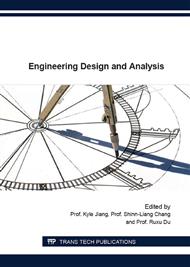p.105
p.113
p.118
p.123
p.128
p.134
p.140
p.149
p.155
Improvement of Multi-Directional Positioning Path Accuracy of Industrial Robots with Rotary Tables
Abstract:
It is very intricate to determine the parameters for a correct kinematic model to compensate robot inaccuracies by calibration. Whereas non model-based approaches to compensate multi-directional robot pose inaccuracies with the help of a correction matrix have the disadvantage of being time consuming due to the large number of measurements. This paper describes a more efficient non model-based method to compensate tool deviations by defining a minimized subspace for the robot, taking advantage of a rotary table. Necessary measuring poses are identified depending on the commanded paths and the inverse kinematics. The authors present the validation and verification of the method. They quantify and evaluate particularly the multi-directional positioning path accuracy.
Info:
Periodical:
Pages:
134-139
Citation:
Online since:
February 2016
Keywords:
Price:
Сopyright:
© 2016 Trans Tech Publications Ltd. All Rights Reserved
Share:
Citation:


